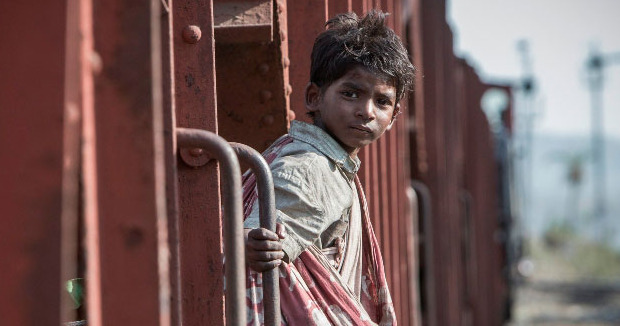

★★★½
Edie and her brother Herbert, nicknamed Gnome, do everything together. As children, growing up above their mother’s pub in late 19th-century Manchester, they roam the streets by night, sneaking into firework shows and exploring their town. But, as the years go on, Edie begins to resent Gnome. Every night he drags her out, forcing her to be more daring and naughtier than she wants to be. By day she’s left empty and ragged. And the worst thing is that Ma and Nan tell her Gnome doesn’t even exist. But he does. He comes every night, regular as clockwork, and Edie begins to dream of ways to control him…
This certainly isn’t quite like any other novel I’ve read and it’s hard to talk about it without spoilers. I suggest that, if the first paragraph whets your appetite, you read the book – don’t read the back first – and then come back and share your thoughts below. If you carry on, you run the risk of being spoiled. You have been warned.
I haven’t read any of Rosie Garland’s novels before, but she definitely has an original mind. As Edie and Gnome grow older, their battle for dominance becomes ever stronger, their struggle exacerbated by Ma’s blatant favouritism for her precious son and by the common growing pains of adolescence. The two siblings find themselves growing ever more different, Gnome seeking out the rough pleasures of Manchester low life, while Edie strives for self-improvement, frequenting the library and trying to find a path out of her miserable existence. Both begin to loathe the other and, as their childhood closeness evaporates, the siblings embark on a bitter war in which, they believe, only one of them can win. But can a balance be forced to favour only one side, or is compromise possible?
Real spoilers lie in this paragraph, so beware. I found Garland’s concept enthralling, but I suppose I wanted slightly more explanation from the novel. How are we, as readers, meant to understand Edie’s and Gnome’s situation? Is it meant to be some magical curse, placed upon the family? If so, who placed it, when and for what reason? Or is it a slightly fantastical medical issue? If so, what is the physiological explanation behind it? In which circumstances could Edie become pregnant and carry a child to term, as her mother and grandmother have presumably done? Would she have to block Gnome out for nine months? And what of her father? Was there ever a father at all? Does this condition enable self-fertilisation (though the mind boggles at the logistics of that)? Are they the only ones in the world who suffer like this? I appreciated the cameo appearance by the Nereid Monument, of course, but the classical equivalent of the hermaphrodite really isn’t the same thing as what Garland offers us. We are very explicitly not dealing with hermaphroditism here, nor with intersexuality, but a kind of very fluid sexual and psychological binarism. The story is fine as a story, but I couldn’t help feeling that such an interesting idea needed more exploration.
However, this is definitely something a bit different, with its 19th-century setting and its creative exploration of gender fluidity, sexual identity and lifestyle choices. It will surely appeal to those who’ve enjoyed Laura Lam’s Micah Grey novels, Sarah Waters, or Jeffrey Eugenides’s Middlesex – an incongruous mix, perhaps, but one that makes for a genuinely unique novel. And it’s encouraged me to look more actively for Garland’s other novels. Has anyone read Vixen? I’m tempted to give it a go.
Buy the book
I received this book from the publisher via Netgalley in return for a fair and honest review
Share this:




